A Nineteen Sixties bungalow on a GDR trip property close to Berlin has been became a self-designed vacation residence with a color palette referencing California modernism.
Positioned in Trechwitz, southwest of Berlin, the 30-square-metre home has a monopitch roof and sloping facade partitions. Constructed from double-walled brick masonry, the 1964 bungalow sits on a 400-square-metre plot.
Its house owners, Jan Winkelmann and Julia Carloff-Winkelmann, who work in tech and within the artwork world, determined to utterly renovate the constructing to utilize it as a summer time home for his or her household.
The duo did the design and a few of the renovations themselves.
“To know the unique structure and unlock the constructing’s full potential, we determined to utterly intestine the bungalow,” Jan Winkelmann advised Dezeen.
“Beginning with the ground plan redesign, we first relocated the cellar entry – beforehand a kitchen hatch – to the outside. Subsequent, we sealed the senior kitchen window and put in a modern one for the lavatory.”
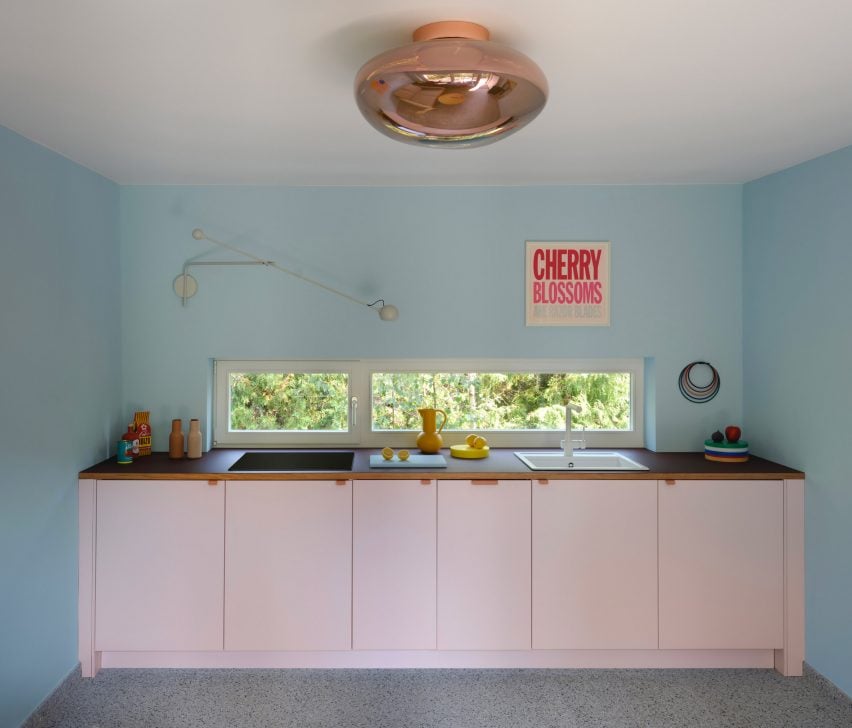
In addition they needed to open the home up a little bit extra to its environment, a former German Democratic Republic (GDR) – also called East Germany – trip property by Lake Netzen, the place it sits amongst 44 different vacation houses.
“Our most impactful change was including a horizontal window in the principle room’s again wall, bringing extra pure airy inside whereas making a stronger connection to the outside,” Jan Winkelmann stated.
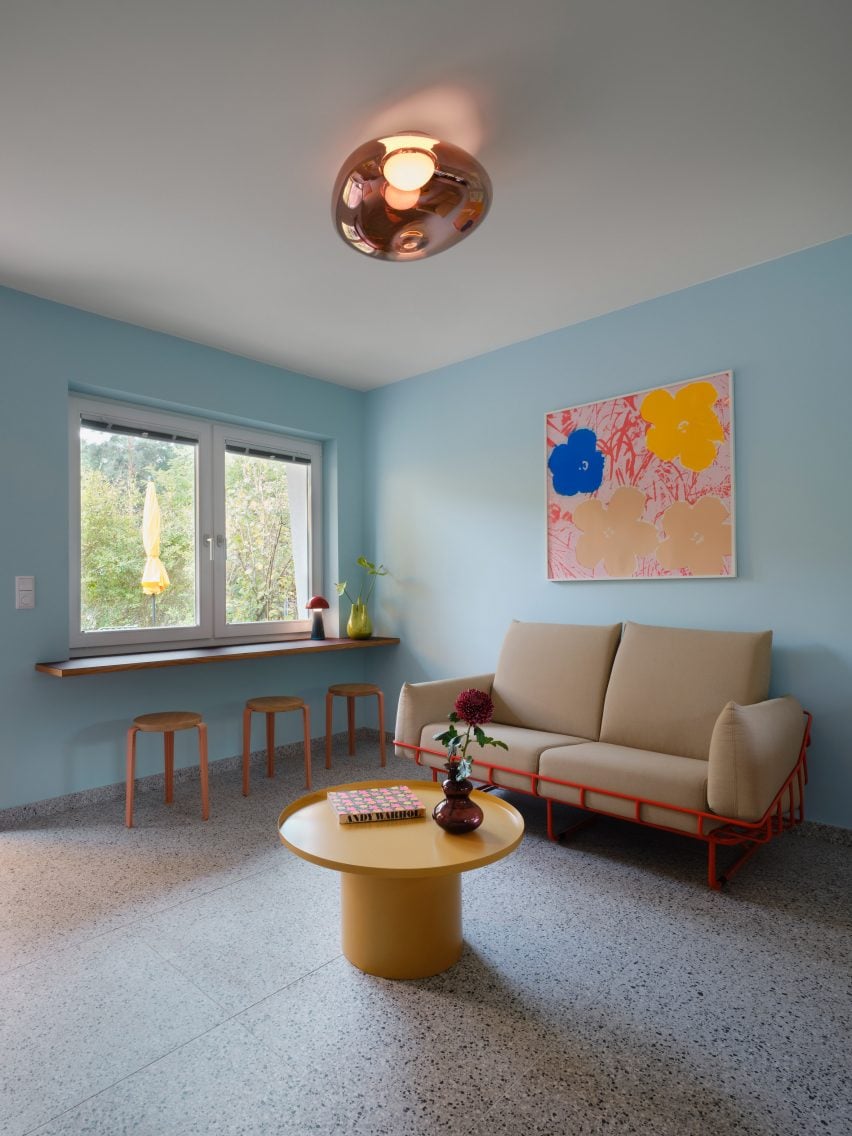
Because the constructing was supposed for use as a summer time home the place life “would primarily unfold exterior on the terrace and within the backyard,” the couple centered on performance.
“This deliberate discount to necessities turned the inspiration of our total design course of,” Jan Winkelmann stated.
“The minimalist furnishings mirror the Nineteen Sixties’ attribute functionalism whereas bringing it into the current – not by means of strict interval recreation, however by means of fastidiously chosen, refined references with chosen ‘historic’ ornamental components.”
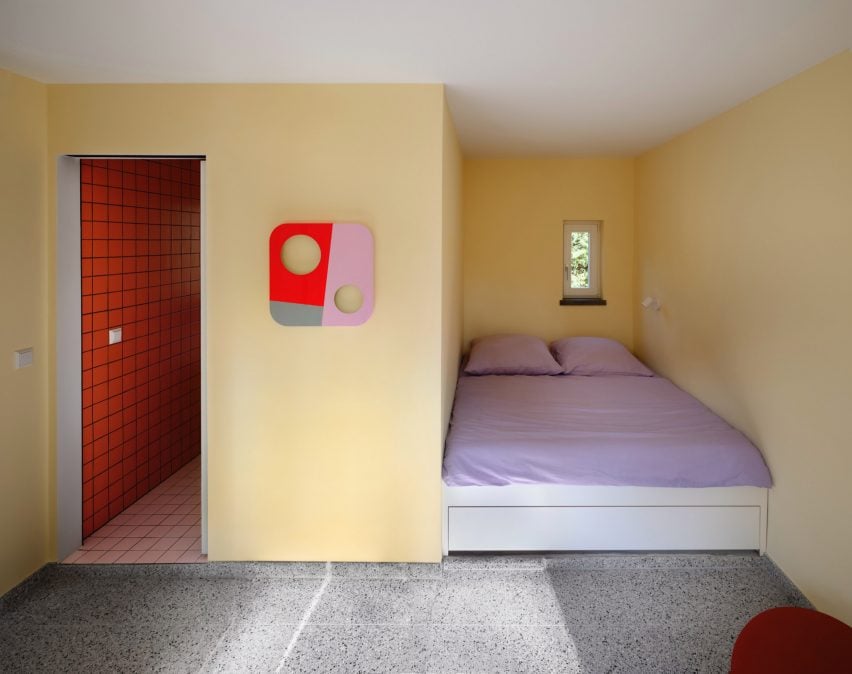
The Nineteen Sixties additionally influenced the colors chosen for the bungalow’s inside, which is roofed in gleeful pastel hues.
“In our analysis, we got here throughout the attribute color palette of Nineteen Sixties California modernism, which represented an ideal hyperlink to the interval through which the bungalow was constructed,” Jan Winkelmann stated.
“After cautious consideration and varied shade research, we selected a harmonious interaction of the three main colours: we selected blue and yellow in pliable, pastel shades that create a chilled ambiance,” he added.
The toilet is totally clad in brilliant crimson tiles, chosen as a “deliberate distinction” to the pastels in the remainder of the home.
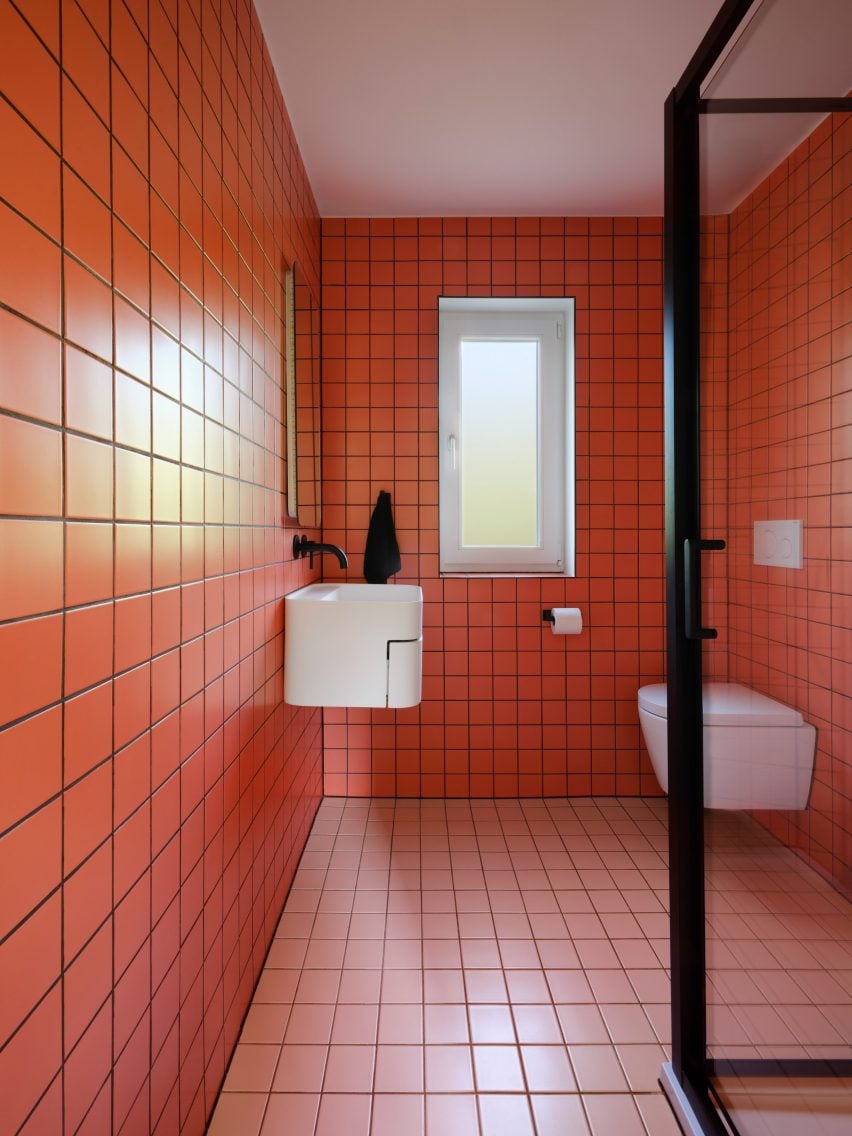
To Jan Winkelmann, the mission was an opportunity to attract on a mode of structure that had all the time fascinated him.
“Ever since I first visited Berlin within the Nineteen Eighties, I used to be fascinated by Karl-Marx-Allee’s wedding-cake structure,” he stated.
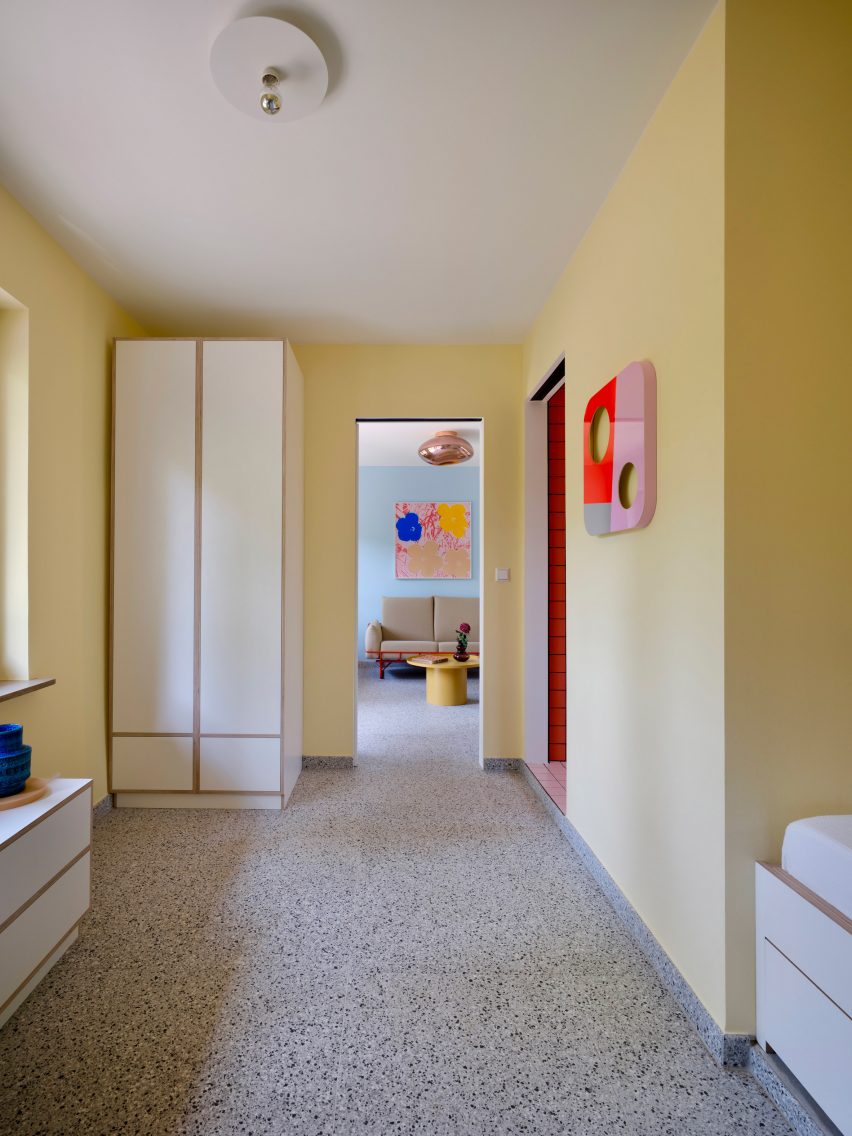
“The second development section – between Strausberger Platz and Alexanderplatz – significantly captivated me with its pavilions, cinema, and Café Moskau,” he added.
“Constructed between 1959 and 1965, this part embraced the ideas of contemporary Nineteen Sixties GDR structure. I am additionally drawn to the ethereal lightness of Ulrich Müther’s novel concrete shell constructions. I see echoes of each types in our bungalow.”
Different initiatives on Dezeen that function renovated East German constructions embody a radio centre that was became music studios and a derelict constructing that was reworked into places of work.






